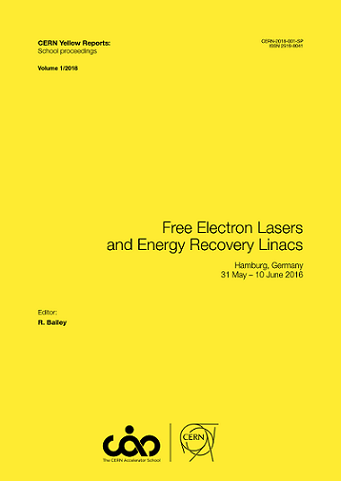Linear Accelerator Technology
DOI:
https://doi.org/10.23730/CYRSP-2018-001.79Keywords:
Radio Frequency, particle accelerators, cavity, electromagnetic field, superconductivity, linac.Abstract
The expression ‘linear accelerator technology’ usually addresses all technological topics related to linear accelerators’ (linac) realization. These topics comprise, for instance, accelerating structures, Radio Frequency (RF) sources, magnets, diagnostics systems, controllers, power supplies, vacuum systems, particle sources, etc. Obviously, the extent of all these subjects is too wide to be covered in a single one-hour lecture and, therefore, this paper will only present an verview of the RF structures (including their fabrication technology) with a few examples of particle sources, RF sources and waveguide components. Moreover, the focus will be on linac technology for Free-Electron Lasers (FELs) and Energy Recovery Lasers (ERLs), which are electron accelerators. Electrons, in fact, even at very low energies (a few MeV) travel very close to the speed of light, and this fact has a direct consequence in the accelerating structures design, since they can be identical all along the linac.
Downloads
Published
Issue
Section
License
Authors who publish with this publication agree to the following terms:
- CERN retains copyright and publishes the work licensed under the Creative Commons Attribution License 4.0 that allows others to share the work with an acknowledgement of the work's authorship and initial publication in this series.
- Authors are able to enter into separate, additional contractual arrangements for distribution of the published version of the work (e.g., post it to an institutional repository or publish it in a book), with an acknowledgement of its initial publication in this series.
- Authors are permitted and encouraged to post their work online (e.g., in institutional repositories or on their website) prior to and during the submission process, as it can lead to productive exchanges, as well as earlier and greater citation of published work (See The Effect of Open Access).

